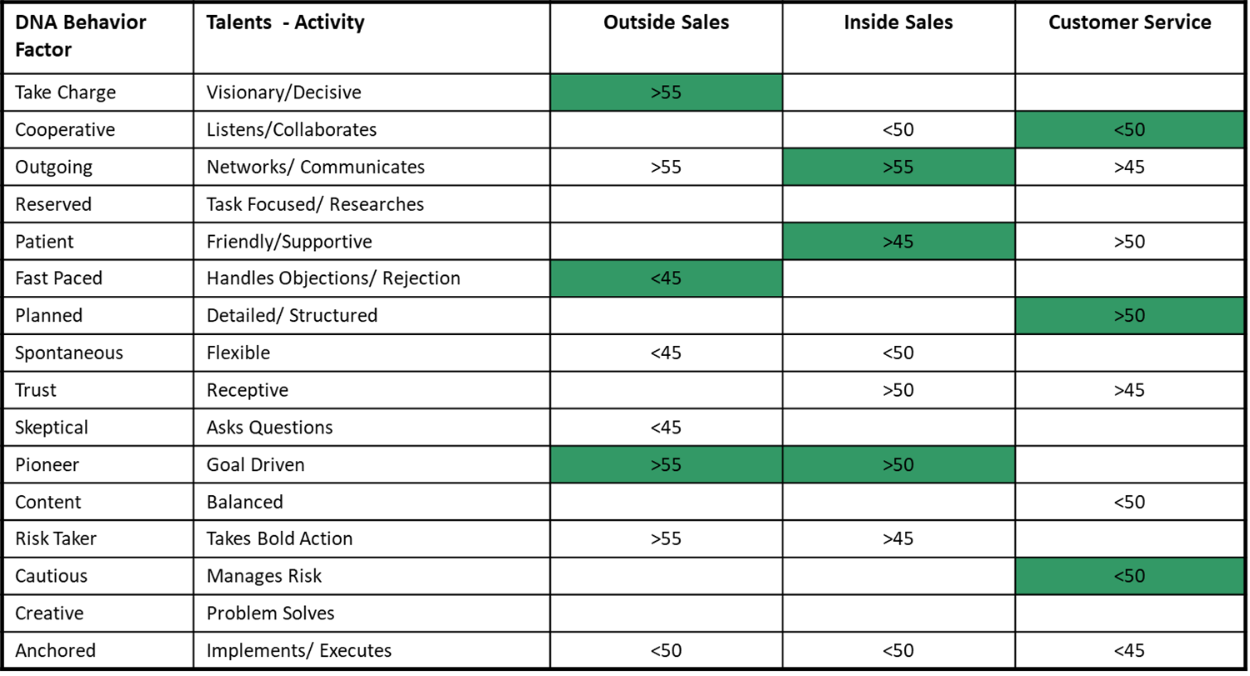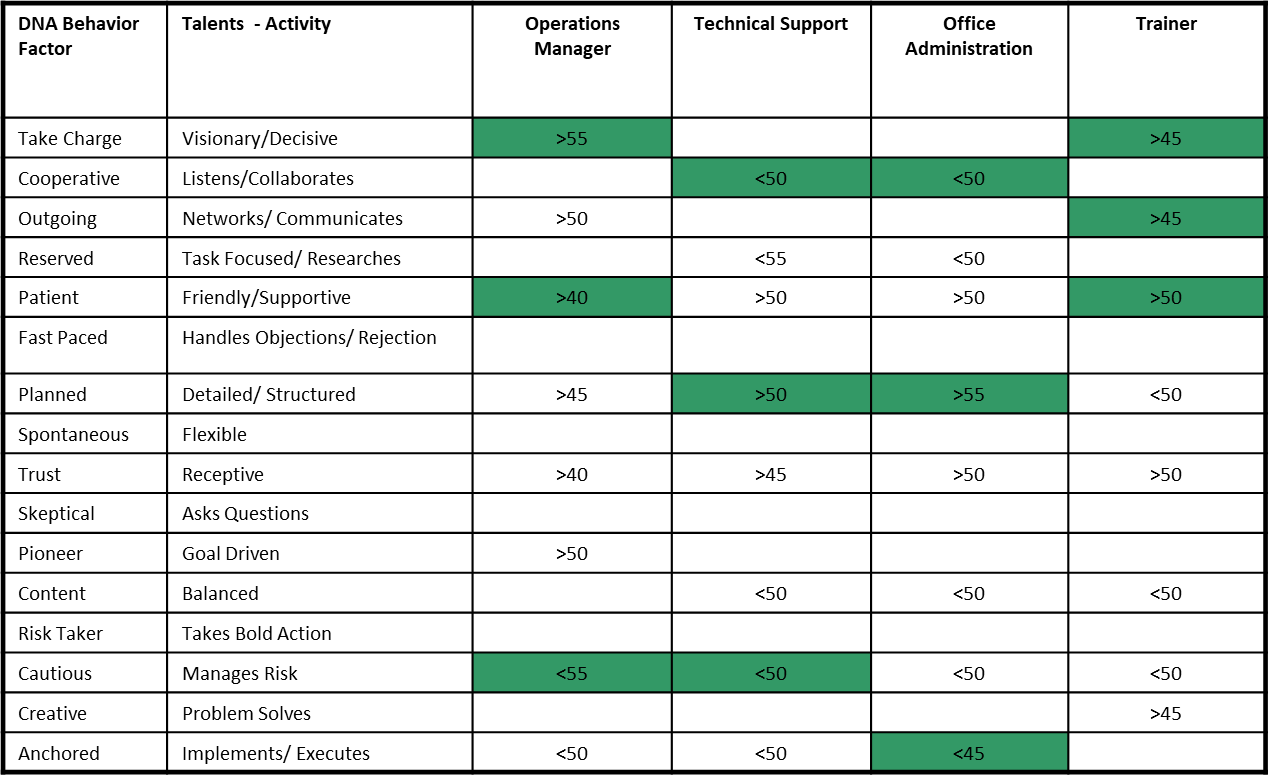Behavioral Benchmarks
This article applies to people using Business DNA insights to build a behavioral benchmark for roles on a team.
Common Questions:
How can I use natural behavior to improve my hiring process?
How can I use natural behavior to assign work better to my team?
Can I build a benchmark using natural behavior?
Solution Overview:
This article will discuss using natural behavior to build a behavioral benchmark for roles in your team. Sample benchmarks will be provided.
Video Walkthrough:
Note: This video was recorded using the legacy system. Not all screens and reports referenced may be the same in the current system. If you have questions, please contact support.
Details
It is possible to match natural talent to roles in your team or organization. Benchmarking is a way of looking at what traits help someone to be successful in a role and seeking those traits when assigning or filling a role. While we never recommend that you only judge candidates on natural behavior scoring, putting people in roles where they will use their behavioral strengths rather than struggling against them is a plus.
Below are some generic benchmarks that show how benchmarking can be done. It is recommended that you look closely at the roles in your organization to fine-tune benchmarks. It is also recommended to look at scores for top performers to identify any natural behavior trends to build a benchmark.
When benchmarking, consider what characteristics, skills, and experience are needed for the role. Below are some examples:
Outside Sales:
Depending on the business, an outside sales role will generally require the person to be a “rain-maker” (“or Hunter”) focused on generating new business.
The role will include the following:
- Makes quick decisions – realistic approach
- Influences opinions- building rapport quickly
- Setting goals - directing clients toward goals
- Handles objections - calling new prospects
- Follows through - accountable for new business targets
- Action orientated - having high energy
- Comfortable meeting new people - networking
- Negotiating - closing capabilities
- Confident in new situations – sets up opportunities
- Takes bold action – prepared to take risks
- Questioning – prepared to ask questions
- Working individually – able to operate independently
Inside Sales:
Depending on the business, an inside sales role will generally
require the person to be a “farmer” focused on building and
managing existing business/relationships. The role will include the following:
- Being friendly - maintaining relationships
- Supportive and patient - responds to client questions
- Demonstrates enthusiasm – people connection
- Follows through- being reliable in following up
- Listening – empathetic to client needs
- Works collaboratively - good team player
- Comfortable meeting new people - networking
- Negotiating - closing capabilities
- Communicating verbally – calling clients
Customer Support:
Depending on the business, a technical support role will require the person to play a more supportive role inside the business. The role will include the following:
- Executing projects - implementation
- Managing time - completing projects on a timely basis
- Being collaborative - good teamwork
- Risk management – compliance
- Listening – provides support to the client and team needs
- Supportive and patient - responds to client queries
- Being friendly - helping to maintain relationships
- Follows procedures - manages technical and back office functions
The tables below show benchmarks that can be built based on the needed role description. Those highlighted in green are the most critical, and other areas with scores are general guidelines, but a candidate with scores outside this range could still be considered for the role.


Still Need Help?
Submit a ticket here.
![DNA-B-Primary_White (7).png]](https://kb.dnabehavior.com/hs-fs/hubfs/DNA-B-Primary_White%20(7).png?height=50&name=DNA-B-Primary_White%20(7).png)